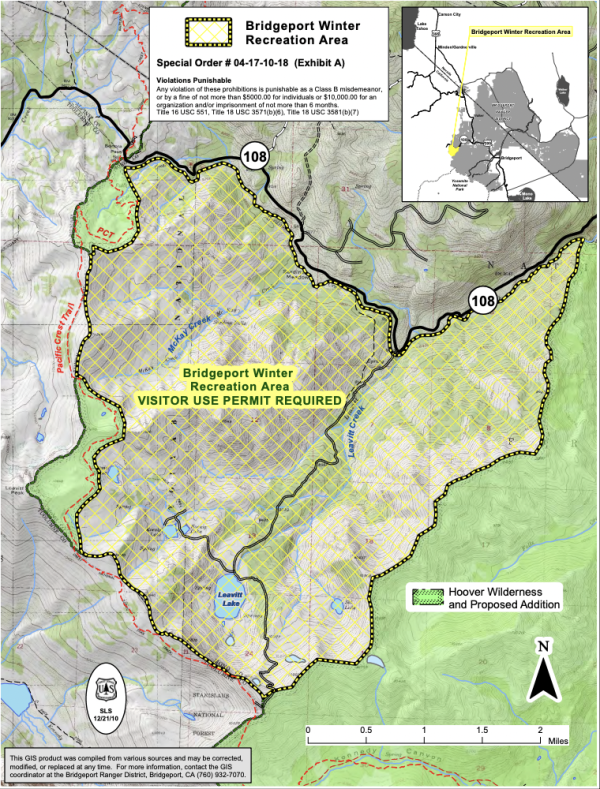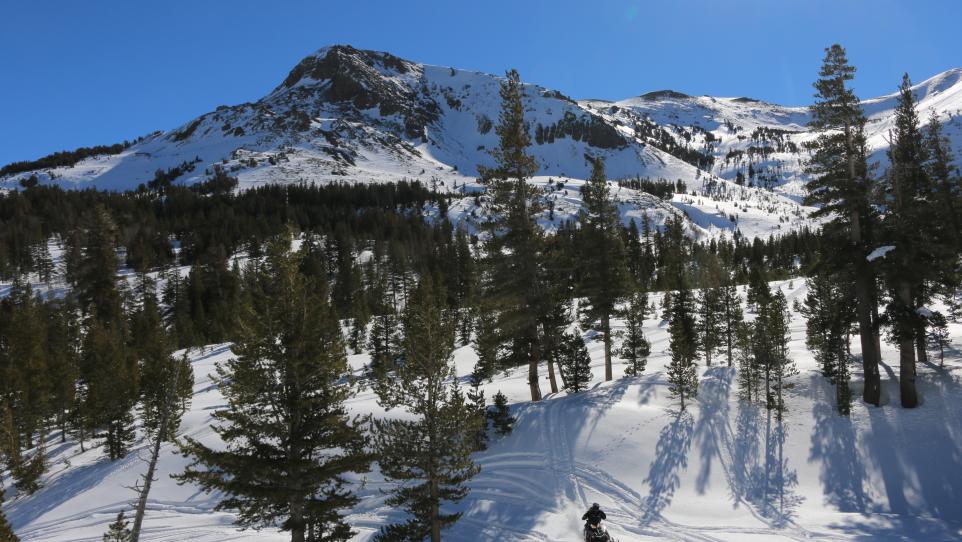Tucked deep in California’s Eastern Sierra mountains is a lesser-known winter recreationalist’s dream: the Bridgeport Winter Recreation Area.
A massive 7,254-acres of mountainous National Forest, the Bridgeport Winter Recreation Area (BWRA) is less than 2 hours from Reno, and about 20 minutes north of its namesake Bridgeport, CA. Its the best of both worlds – remote but easily accessible. And with that much acreage, users are spread out and can still enjoy the solitude of the backcountry.
Typically open from December to April, the BWRA (pronounced “BOO-rah”) boasts world-class snowmobiling, backcountry skiing and snowboarding, as well as snowshoeing and cross-country skiing, while remaining entirely free. This area also boasts some of the most snowfall in the entire state, ensuring that conditions are top-caliber throughout the season.
I spoke to the professional skier and visionary of the wildly successful Atomic Bent Chetler line, Chris Benchetler, about his experience in the zone.
“I started skiing in that area around 16 years old; I started going up north of Mammoth and expanding my backcountry knowledge a bit. I started taking snowmobiles [to the BWRA], and once I got into touring, I started walking around a bit more and blended the two together where it was legal and able.”
The BWRA’s snowmobile access helped get Chris into touring and shaped him into the legendary skier he is today. Not only does snowmobiling improve access, but it also increases safety:
“[Snowmobiling] does just allow a lot more access, more safety, allows you to see more terrain, cover more ground, see more avalanche activity, and have the ability to pivot and change your objective much easier if you have the ability of snowmobiling versus walking all the way back out and going to a different place altogether.”
The terrain of the BWRA is unique since it offers direct access to the crest of the Sierra Nevada mountains with straightforward access; the top of BWRA reaches up to 11,573’ at the top of Leavitt Peak, right on the edge of the area, just 3.4 miles from the trailhead as the crow flies. The diversity of the terrain is also very unique, as the BWRA offers terrain for all abilities, ranging from rolling powder slopes to steep, walled-in couloirs in high alpine cirques. And for skiers with snowmobiles, this terrain is extremely accessible.
“I really do enjoy it all, so it depends on what type of skiing I feel like doing that day, really. I guess historically, I like a bit more playful skiing, so I’m looking for the rolling terrain and kind of the more featured slopes, but living in the Sierra, there are amazing couloirs in the area, and I love skiing couloirs too. I guess a majority of my focus in that area has always been the more playful terrain that it offers.”
Both the winter and spring are fantastic for skiing in the Eastern Sierra, and everyone has their preference, so I asked Chris what his favorite time was to visit the BWRA:
“I really like it in the winter. As you start to approach the spring, with that snowmobile access, it's not quite as easy as it is in the heart of winter, so I really like going out there in the winter and trying to get fresh pow.”
One advantage of Mono County’s location in the central Sierra Nevada is its relatively safe snowpack. This means a lower risk of avalanches than in a more problematic region like Colorado. However, dangerous avalanches can still occur and injure or kill winter recreationists in the area. The Eastern Sierra Avalanche Center and Bridgeport Avalanche Center are great resources to stay up to date on conditions and stay safe in the backcountry.
Founded in 2020, the Bridgeport Avalanche Center (BAC) is managed by the Bridgeport Ranger District on the Humboldt-Toiyabe National Forest. The BAC forecasts for the BWRA and helps keep tens of thousands of users safe daily during their operating season. The goal is clear, concise messaging to pass along life-saving information.
Avalanche forecasts are critical for keeping backcountry users safe. BAC provides avalanche forecasts at different elevations and aspects to give recreationalists a better idea of where danger is present and what to watch out for. The BAC also allows users to view observations and weather data, giving them a better idea of the current conditions in the field. These observations and weather data also provide forecasters with more tools to make the best forecasts.
If you’re looking for a backcountry recreation opportunity this winter or spring, look no further than Mono County’s Bridgeport Winter Recreation Area. Check the forecast from the Bridgeport Avalanche Center (BAC) before heading out and use typical backcountry caution (partner, beacon, shovel, probe, etc.). Permits are free, but mandatory, and available on the BAC site.


